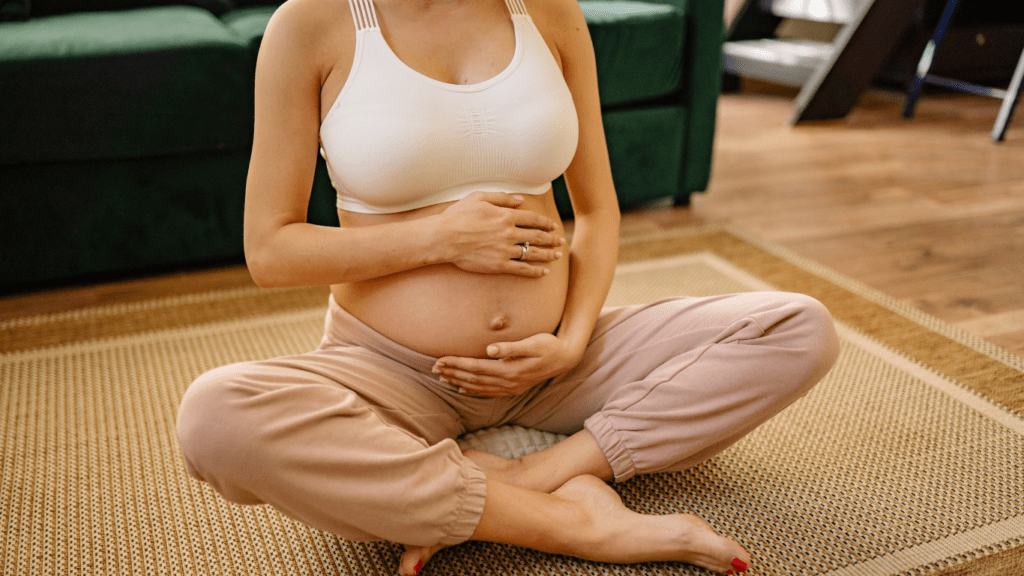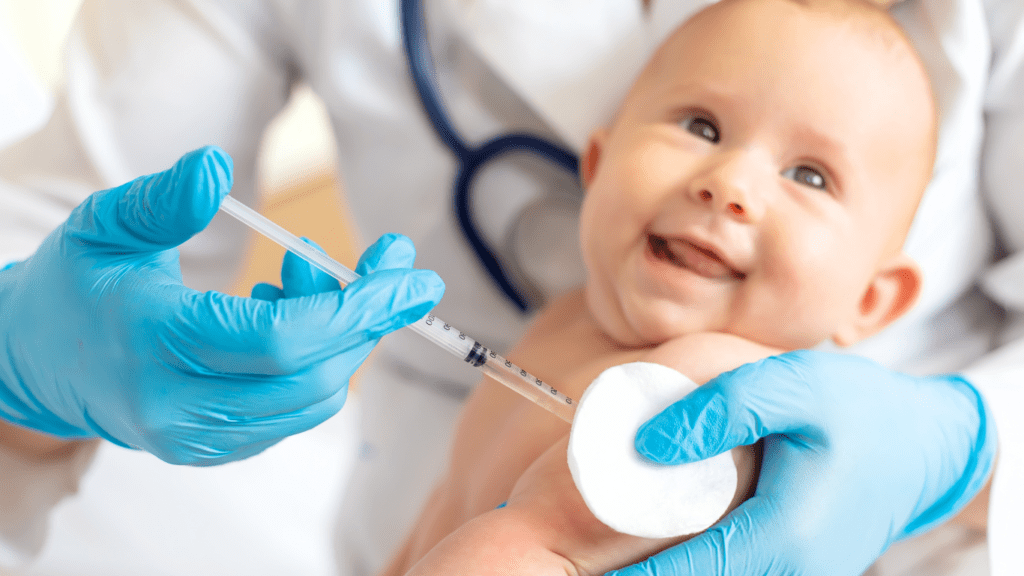Overview of Pregnancy Trimesters
Understanding the three trimesters of pregnancy helps in managing expectations and preparing for each phase. With distinct milestones and symptoms, each trimester brings specific experiences.
First Trimester (0-13 Weeks)
During the first trimester, the body undergoes significant hormonal changes. Expect symptoms like morning sickness, fatigue, and breast tenderness. The fetus develops major organs by the end of this period. Prenatal appointments typically include ultrasounds and blood tests.
Second Trimester (14-26 Weeks)
In the second trimester, many women notice a decrease in early pregnancy symptoms. Energy levels often improve. The fetus gains weight rapidly and starts moving. Routine prenatal visits monitor growth and development. An anomaly scan is common around 20 weeks to check for congenital disabilities.
Third Trimester (27-40 Weeks)
The third trimester focuses on final fetal development and maternal preparation for childbirth. Common symptoms include back pain, swelling, and Braxton Hicks contractions. The fetus’s organs mature, preparing for birth. Prenatal care includes frequent check-ups and discussions about labor and delivery plans.
First Trimester: Weeks 1-13
The first trimester spans from weeks 1 to 13. It marks the beginning of a transformative journey with both profound physical and emotional changes.
Physical Changes
During the first trimester, several physical changes occur. Hormonal shifts often lead to nausea, commonly known as morning sickness. Fatigue is prevalent due to the body’s efforts to support the developing fetus. Other common symptoms include breast tenderness and frequent urination. The uterus starts expanding, although it’s not usually visibly noticeable yet.
Emotional Changes
Emotionally, the first trimester can be challenging. Many expectant mothers experience mood swings due to fluctuating hormone levels. Anxiety about the pregnancy and upcoming changes is common. Some may feel overwhelming joy, while others might encounter periods of sadness or irritability. Support from loved ones can help navigate these emotional shifts.
Key Milestones
Several key milestones mark the first trimester. Around 6-7 weeks, a heartbeat becomes detectable via ultrasound, which reassures the pregnancy’s progress. By week 10, the fetus’s major organs begin forming, and by the end of the 13th week, all essential organ systems are in place. Prenatal visits during this period involve confirming the pregnancy, estimating the due date, and starting essential screenings.
Second Trimester: Weeks 14-27
The second trimester, encompassing weeks 14 to 27, is often described as the most enjoyable phase of pregnancy. Many common early symptoms begin to subside, bringing physical and emotional relief.
Physical Changes
During the second trimester, noticeable physical transformations occur. My abdomen visibly expands as the fetus grows larger, leading to an outwardly apparent pregnancy. I may experience changes such as:
- Increased Energy: Many women gain more energy as the fatigue from the first trimester diminishes.
- Weight Gain: Healthy weight gain typically ranges between 1 and 2 pounds per week as the baby develops.
- Breast Changes: Breasts continue to grow as milk glands prepare for breastfeeding.
- Skin Changes: Skin may show pigmentation changes, with the appearance of darkened patches known as melasma.
- Round Ligament Pain: Discomfort caused by stretching ligaments supporting the uterus.
Emotional Changes
Although physical symptoms often improve, emotional shifts may still occur. I could feel emotionally lighter but also encounter new psychological experiences, such as:
- Increased Bonding: As fetal movements are felt around 18-20 weeks, the bonding process can strengthen.
- Mood Stability: Hormonal fluctuations level out, leading to more stable moods compared to the first trimester.
- Anxiety Relief: Reduced pregnancy-related anxiety is common, though concerns about childbirth and parenting may emerge.
- Body Image Awareness: As the body changes, I might confront feelings about the altered physical appearance.
Key Milestones
Several significant events mark this trimester, indicating the progression of pregnancy. Key milestones include:
- Fetal Movement: First fetal movements, known as quickening, typically felt between 18 and 20 weeks.
- Ultrasound: The 18-20 week anatomy scan checks fetal development and can determine the baby’s sex.
- Viability: By 24 weeks, the fetus reaches the point of viability, meaning it could survive outside the womb with medical assistance.
- Prenatal Testing: Optional tests for genetic conditions, like amniocentesis, are often performed during this period.
This trimester embodies a period of growth, both physically and emotionally, setting the stage for the final phase of pregnancy.
Third Trimester: Weeks 28-40
As I move into the final stretch of pregnancy, the third trimester brings significant developments for both me and the baby. This phase covers weeks 28-40, and it’s marked by noticeable physical and emotional changes along with critical milestones.
Physical Changes
During the third trimester, physical changes become more pronounced. My belly grows larger, making movement and finding comfortable positions difficult. Braxton Hicks contractions, which are irregular and mostly painless, may occur as my body prepares for labor. I might experience swelling in my ankles, feet, and face due to increased fluid retention and changes in blood circulation. Additional symptoms like heartburn, shortness of breath, and frequent urination can be more pronounced as the baby takes up more space.
Emotional Changes
Emotionally, the third trimester can be a rollercoaster. I might feel excitement and anticipation mixed with anxiety about labor and motherhood. Sleep disturbances due to physical discomfort can exacerbate feelings of fatigue and irritability. The nesting instinct often kicks in, leading me to prepare my home for the baby’s arrival. This period is also a time for me to connect with my support system, as sharing my thoughts and concerns with loved ones can bring comfort and reassurance.
Key Milestones
Several key milestones occur in the third trimester that are essential for both me and my baby. Around 28 weeks, the baby begins to settle into a head-down position, preparing for birth. By 36 weeks, my healthcare provider will assess the baby’s position and readiness for delivery. Weekly prenatal visits typically start around this time to monitor the baby’s growth and my health. At 37 weeks, the baby is considered full-term, and I should be prepared for labor at any time. The estimated delivery date marks the end of this trimester, though many babies arrive slightly before or after this date.
Throughout the third trimester, these changes and milestones shape my pregnancy experience as I await the arrival of my baby.
Health Tips for Each Trimester

Maintaining good health throughout pregnancy can make a significant difference in both fetal development and the mother’s comfort. Here, I provide essential health tips for each trimester.
Nutrition and Diet
First Trimester: Eating balanced meals rich in folate, iron, and calcium supports the baby’s early development. Foods like leafy greens, lean meats, and dairy can be beneficial. Morning sickness might make this challenging, so eating small, frequent meals and staying hydrated helps.
Second Trimester: Increasing intake of protein, iron, and omega-3 fatty acids is crucial as the baby grows rapidly. Incorporating foods such as fish, nuts, and eggs boosts nutritional value. Avoiding caffeine and focusing on nutrient-dense foods can aid in maintaining energy levels.
Third Trimester: Managing heartburn and constipation becomes important. High-fiber foods, plenty of water, and smaller meals can alleviate these symptoms. Continue focusing on iron and calcium to support the baby’s final growth and prepare the body for labor.
Exercise and Fitness
- First Trimester: Gentle exercises like walking, swimming, and prenatal yoga can improve mood and energy levels. Avoid high-impact activities and consult a healthcare provider before starting any new exercise regimen.
- Second Trimester: Maintaining regular, moderate exercise helps in weight management and reduces pregnancy-related discomforts. Activities like brisk walking, swimming, and strength training with light weights can be beneficial. Wearing supportive shoes and staying hydrated during workouts is crucial.
- Third Trimester: Focus on low-impact exercises to reduce strain on the body. Pelvic floor exercises, gentle yoga, and swimming can help manage weight gain and prepare the body for labor. Listening to the body and resting when needed are important to avoid overexertion.
Prenatal Care
- First Trimester: Regular prenatal visits to monitor the baby’s development and manage early symptoms are essential. Screenings for blood pressure, blood tests, and early ultrasounds help in identifying potential issues.
- Second Trimester: Continue regular check-ups to monitor fetal growth and maternal health. An anatomy scan around 20 weeks assesses the baby’s development, and glucose screening for gestational diabetes is typically done between 24-28 weeks.
- Third Trimester: Frequent prenatal visits, typically bi-weekly or weekly, become necessary. Monitoring the baby’s position, assessing the cervix, and discussing birth plans are key aspects. Attending a childbirth education class can prepare for labor and delivery.
Common Concerns and Solutions
Navigating pregnancy brings various concerns, but understanding common issues and their solutions alleviates much of the stress.
Morning Sickness
Morning sickness affects up to 80% of pregnant women, mostly in the first trimester. Small meals throughout the day stabilize blood sugar, easing nausea. Ginger tea and vitamin B6 supplements also help. If these remedies don’t work, consult a healthcare provider for medication options.
Fatigue
Fatigue is prevalent in the first and third trimesters. Prioritize rest and incorporate a healthy diet with iron-rich foods like spinach and lean meats. Short, frequent naps restore energy levels. Light exercise like walking boosts stamina and reduces tiredness.
Weight Gain
Weight gain is inevitable. A balanced diet ensures healthy weight gain. In the first trimester, gain 1-4 pounds. By the second and third trimesters, expect to gain about 1 pound per week. Regular prenatal check-ups monitor weight, avoiding excessive gain.




